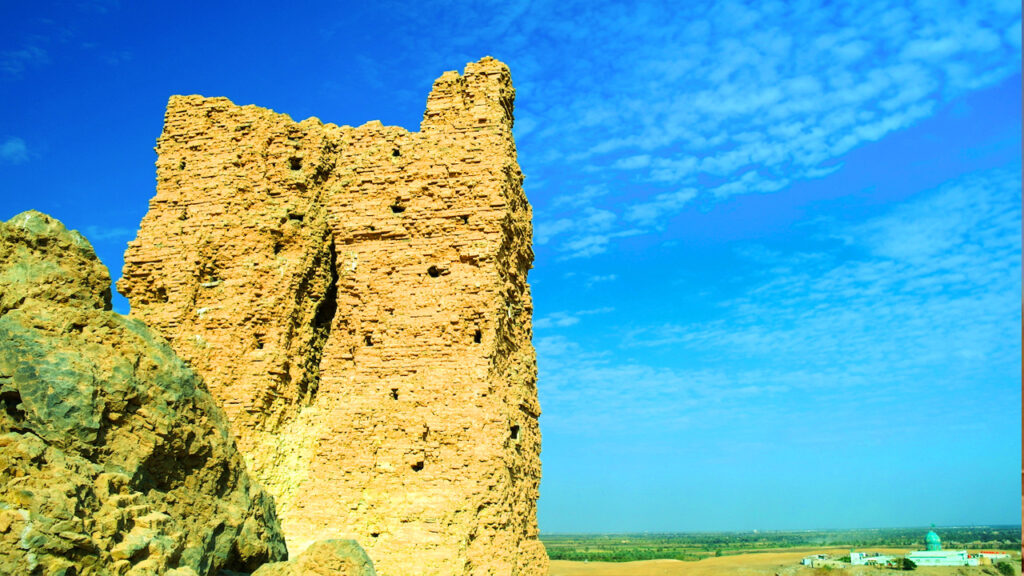The second capital of Assyria had been a well-settled place for a thousand years before it was built as a centre of his kingdom by Shalmaneser I (1273-1244 B.C.). A famous king of Nimrud was Assur-nasir-pal II (883-859 B.C.), and so was his son Shalmaneser III (858-824) who constructed its ziggurat together with a temple next to it. Lying as it does on the east bank of the Tigris, 37 kms. to the south-east of Mosul, the city has a four-side wall measuring in all 8 kms., and several buildings, in the south-western and south-eastern corners, raised on mud-brick platforms as much as forty feet high above river-level. Some of the buildings are: the temple of Ninurta. the north-western and the south-western palaces, Sargon’s Palace, and others – notably the ziggurat which looks rather like a conical hill, the remains of it rising to a height of 17 metres. It lies in the north-western corner of the city. It originally had a square base, with most probably a spiral ramp like that of Samarra’s mulwiya minaret, leading to its upper levels. Assurnasirpal II’s Palace, known as the north-western palace. has an area of 200 x 130 metres, and consists of administration, ro- yal reception, and residential parts. The visitor at present enters the palace through a couple of doorways, between human-headed bulls or lions with the wings of a hawk. These huge sculptures were meant to be the guardians of the city. Some beautiful bas-relief slabs are still on the site, though most of them were taken away by foreign excavators. Most striking is the throne room, measuring 45.5 x 10.5 metres. It was here that a large number of exquisite ivory carvings were found, such as the so-called “Mona Lisa of Nirmud” and the piece showing a lioness mauling an Ethiopian, which is gilded and set with lapis-lazuli and agate. The south-western palace belonged to Esarhaddon. One of the buildings is Esida, the temple of Nabu, god of visdom and the arts and sciences, son of the Babylonian god Marduk. It was the work of Queen Samuramat (Semiramis), mother of Adad-Nirari III (810-782 B.C.)





